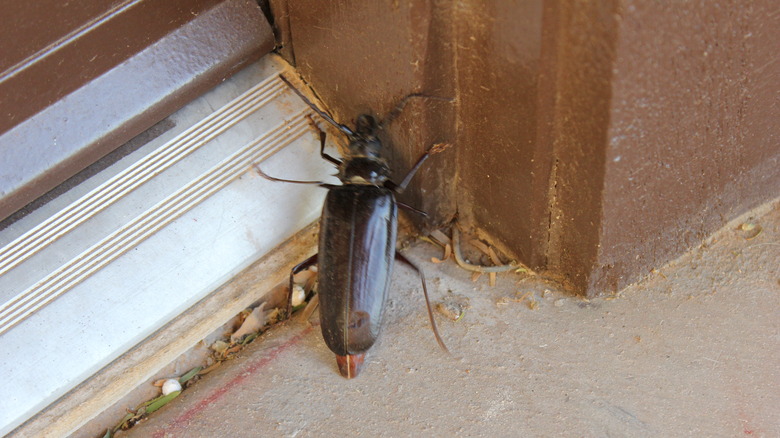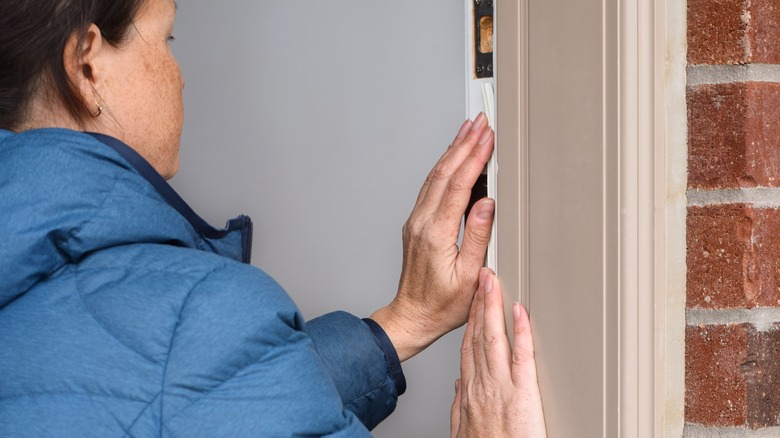The Easy Door Upgrade That Helps Keep Pests Out Of Your House
It can be incredibly frustrating when unwanted pests come into your home, turning your personal space into a constant source of stress. Whether it's ants coming to eat spills in your pantry, mice rustling in your walls at night, or cockroaches looking for leftovers after dinner, their presence can feel intrusive and unsettling. The damage they cause and the mess they leave behind only add to the frustration. If you've sealed entryway points in your home's foundation, plugged your sinks with rubber stoppers, and upgraded your food storage, but the flow of pests isn't slowing, there may be a point of entry you haven't considered — your doors.
That's right: After all the work you've put in to stop bugs and rodents from entering your home, they may simply be walking right through your door. Due to the small size of bugs and the flexibility of rodents' ribcages, the gaps around your doors may be large enough for a variety of pests to fit through. An easy upgrade that prevents bugs and rodents from entering your home through these gaps is to install door sweeps, caulk the door, and install weather stripping.
Not only will sealing door gaps help keep unwanted critters out, but it might also benefit your energy bills. This is because the same gaps that let in pests also allow air to pass through. After you close the entry points around your doors, the cool air will stay inside, and the pests will stay outside.
How to properly seal your doors to keep bugs and rodents out
To begin this door upgrade, you need to check around the frame of your door, not just the door itself, for cracks and gaps. You can do this by visually inspecting it or feeling for air movement with your hand. Another way to check for air movement is to light a flame or an incense stick and slowly move it around the door frame. If the flame flickers or the smoke moves, you have found an area that needs to be sealed. When you have identified the areas, apply beads of caulk over them and smooth the caulking out.
Now, it's time to install weather stripping. It's important to note that this should be done on a low-humidity day when the temperature is over 50 degrees. To start, measure your door frame, cut the stripping to the appropriate size, and apply the self-adhesive strips starting at the top corner of the frame. The last step to pest-proofing your doors is installing the door sweep. This is done by measuring and cutting the door sweep, drilling pilot holes, and screwing it into place.
While the weather stripping and caulking won't be visible from inside your home, the door sweep will. Luckily, door sweeps come in many different styles and materials. So, whether aluminum, black vinyl, or white vinyl will look best, you should be able to find something that doesn't stand out too much.

